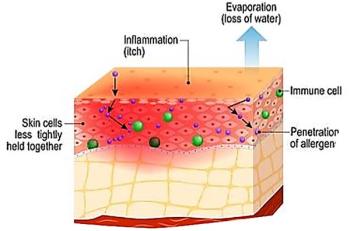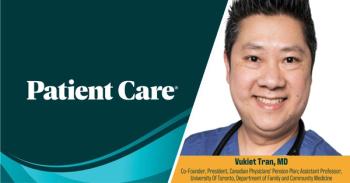
Allergy-Related Asthma Rises with National Wealth
ULM, Germany -- Childhood asthma symptoms are more likely to be allergy related in affluent countries than in less developed ones, researchers found.
ULM, Germany, Sept. 14 -- Childhood asthma symptoms are more likely to be allergy related in affluent countries than in less developed ones, researchers found.
Atopic children in affluent countries were four times more likely to have asthma symptoms than those without allergic sensitization. By comparison, atopic children in non-affluent countries were only 2.2 times more likely to have symptoms than those without allergic responses.
These findings from a 22-country study were reported in the second September issue of the American Journal of Respiratory and Critical Care Medicine by Gudrun Weinmayr, Ph.D., of Ulm University here, and colleagues.
The findings did not extend to an individual's personal wealth, and the national-level differences are likely complex, they wrote.
"A wide range of different factors, including nutrition, microbial and allergen exposure, housing conditions, exposure to pollutants, and so forth, may have played a role," they said.
The first phase of the International Study of Asthma and Allergies in Childhood (ISAAC I) found that asthma, allergic rhinitis and atopic eczema symptoms varied more than 20-fold around the world.
Dr. Weinmayr's group tried to figure out the reason behind these differences in the second phase of the study.
They evaluated parent-reported respiratory symptoms for 54,439 children ages eight to 12 along with skin prick test results for 31,759 of the children and serum allergen-specific IgE measurements for 8,951.
The occurrence of wheeze in the prior year ranged from 0.8% in rural Ecuador to 25.6% in Uruguaiana, Brazil. Skin prick reactivity was least common in rural Ghana (1.7%) and most common in Hong Kong (45.3%).
Atopic wheeze, the combination of current wheeze and skin prick reactivity, varied from 0.2% in rural Ecuador to 13.4% in Hawkes Bay, New Zealand. The nonatopic wheeze likewise varied widely from 0.4% in Guangzhou, China, to 20.9% in Uruguaiana, Brazil.
Current wheeze was significantly correlated with skin prick test reactivity in all testing centers in affluent countries (those with a gross national income per capita greater than US,200) except for Reykjavik, Iceland.
However, the correlation was stronger in richer countries (combined odds ratio 4.0, 95% confidence interval 3.5 to 4.6, versus 2.2, 95% CI 1.5 to 3.3).
The same was true for elevated allergen-specific IgE levels, which were more strongly associated with current wheeze in affluent countries (combined OR 3.5, 95% CI 2.9 to 4.2) than in other countries (combined OR 1.9, 95% CI 1.0 to 3.9).
Atopy-related asthma symptoms were strongly associated with gross national income per capita (P=0.002) whereas nonatopic wheeze was not (P=0.92).
The fraction of current wheeze attributable to atopic sensitization in the study was twice as high in affluent countries (40.7%) as in nonaffluent countries (20.3%). The fractions of current wheeze attributable to IgE antibodies were similarly 45.6% versus 18.3%.
Population-level asthma symptom occurrence attributable to atopic sensitization showed the same pattern at 4.1% for affluent countries and 1.2% for nonaffluent countries as did occurrence attributable to allergen-specific IgE (4.6% versus 1.1%, respectively).
In the study and at the population level, occurrence rates of atopic-attributable wheeze was strongly correlated with gross national income per capita (P=0.006 and P
Newsletter
Enhance your clinical practice with the Patient Care newsletter, offering the latest evidence-based guidelines, diagnostic insights, and treatment strategies for primary care physicians.


















































































































































































































































































